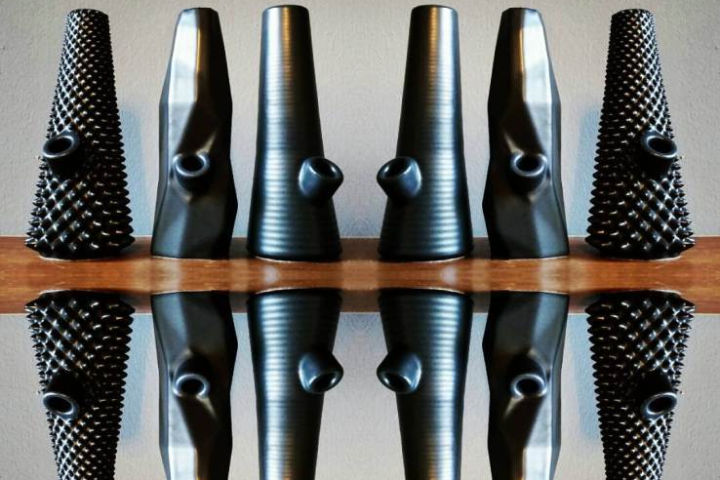
Technically speaking, the bongs themselves aren’t actually 3D printed — but the ceramic molds used to shape them are. The 3D printed molding process will allow the cannabis startup to print multiple styles quickly, once they expand beyond these limited edition releases. Each pipe is cast from high quality ceramic, with slides and downstems made of lab-grade borosilicate glass. In addition, every PrintABowl release comes with a snap-lock travel case for safekeeping. The Alpha and the Tesselate cost $300, and were each printed as part of a limited-edition set of just twenty bongs in total. The Ferro was inspired by ferrofluid, a reactive liquid that interacts with magnetic charges applied to it. Ferro’s “tactual appeal” is only available in an edition of ten, and each one costs $325.
It’s entirely possible that PrintABowl wrote their product descriptions after testing out each release, but that is only fitting. The company’s website reads: “Alpha’s minimalist form, manifest in its subtle striations, exudes a serene elegance,” and “Tessellate’s angular geometry recalls the naturally sharp angels characteristic of smokey quartz, a semiprecious crystal renowned for its ethereal grounding properties.” Far out, dude!
Al and Saul Jacobs came up with the idea for PrintABowl while pursuing arts degrees at the University of Washington in Seattle. Each of the Cumulo Collection bowls is designed to stand as a piece of fine art, in addition to their status as “physical manifestations of 3D printing’s earliest impact on smoking culture”. Since PrintABowl is promoting the Cumulo bowls as the company’s debut collection, we’re likely to see more custom 3D printed bongs from them in the near future.
Editors' Recommendations
- 3D printed cheesecake? Inside the culinary quest to make a Star Trek food replicator
- Fighting football injuries with 3D-printed, hyper-personalized pads
- Need a last-minute Halloween costume? Check out these 3D-printable getups
- The best 3D printers under $500
- Ceramic ink could let doctors 3D print bones directly into a patient’s body



